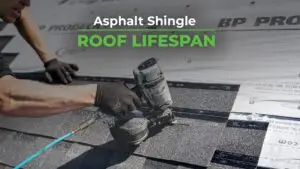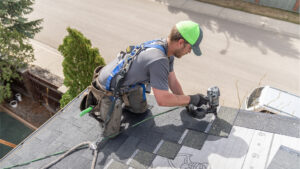Spring is a good time of year to check on your flat roof, because the snow melts and reveals new issues that appear over winter. It’s a good time to do regular maintenance tasks as well as get a professional inspection to catch small problems before they turn into larger issues. Here’s what we look for when inspecting flat roofs for homeowners.
Signs Your Flat Roof May Need to be Repaired or Replaced
If You Have a Tar & Gravel Roof
We like to be honest here at C&M, so we’ll say this frankly: if you have a tar & gravel roof you likely need it replaced soon.
Tar & gravel roofs are no longer as common as they were; in fact, we don’t repair tar & gravel roofs, we simply recommend replacing them with a different material. Companies need special equipment and insurance to do this type of work, and since it’s known that other types of roofing are generally better for the home and homeowner, we don’t repair or install tar & gravel roofs.
Be aware that it’s very difficult to determine where leaks are on a tar & gravel roof. The gravel makes it difficult to find where water is getting in, and therefore where repairs need to happen. With the new membranes of torch down roofs, it’s easier to diagnose leaks.
Tar & gravel roofs have become much less popular since the early 2000s, which means that most of these roofs are around 25 years old. That alone means it’s time for a new roof.
Having said this, there are some warning signs we look for before making any decisions. Loss of gravel and bare spots are indicators that your tar & gravel roof needs replacement. We also look for split and worn out tar.
If You See Granules or Gravel in Your Downspout
Similar to asphalt shingles, you should pay attention to what’s coming out of your downspout. Granules can shed off on torch down flat roofs and come out of the down spout, and small bits of gravel can come off of tar & gravel roofs.
In all scenarios, this is an indicator that you should request an inspection from a professional.
If Your Flashing Is Damaged
Flashing refers to specific metal products that direct water away from vulnerable areas. You’ll typically see them surrounding chimneys, valleys, or other seams and joints.
If the flashing is damaged on your roof, there could be water getting into those areas. As with most problems, it’s best to catch these issues when they’re small so they don’t lead to rot and larger repairs later on.
If You See Wear & Tear on the Surface
On torch down roofs, look for bubbled membranes, as well as blisters, cracks, and pooling water. Even if there aren’t leaks you’re aware of, these observations can indicate problems. From inspections and checks, your roofing professional can let you know if the wear & tear warrants repairs or a full roof replacement.
How to Maintain Your Flat Roof
While roofs are considered out of sight, out of mind for many people, they’re significant investments that need to be monitored and maintained.
Every time a storm rolls through your neighbourhood, you should check on your flat roof to assess the damage (once it’s safe to do so). Look for pieces that may have lifted with wind, and all the warning signs mentioned above like cracks, bubbles, and pools.
You should clean your downspouts and clear debris from drainage holes twice a year. Good times are in spring and fall, to clear fallen leaves. These leaves can cover drainage holes and hold more water than intended on your flat roof. If you have eavestroughs, clean them out as well.
You Should Get Your Flat Roof Inspected Each Year
The best way to maintain the investment of a flat roof is to get it inspected professionally once a year. Our team at C&M knows all the signs to look for and can determine if a repair or full replacement is needed. Give us a call at (403) 394-1811 to book your inspection or fill out our online form. We’d be happy to take a look and make sure your roof is in good condition.




